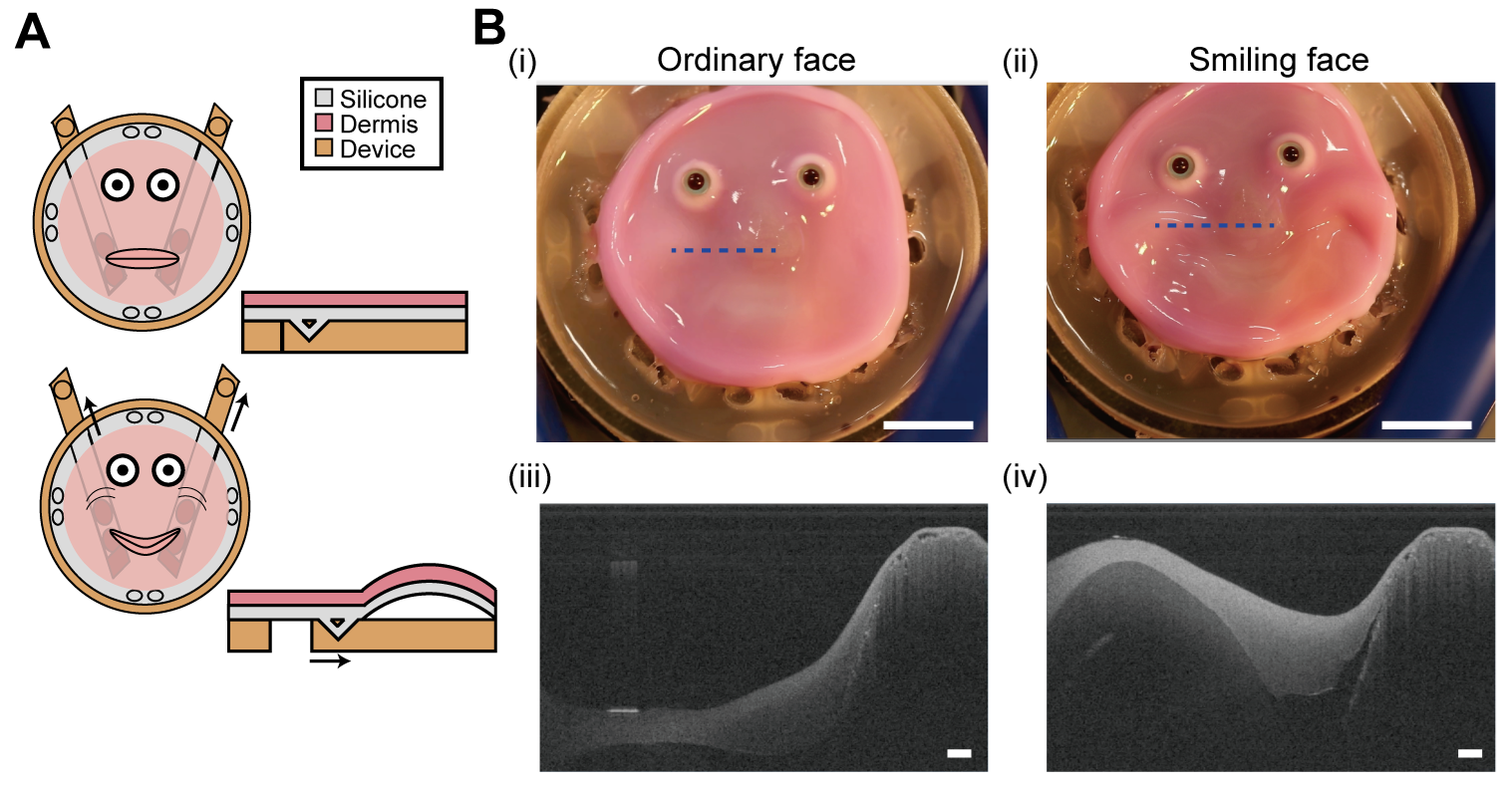This grinning pink blob might populate your nightmares for the next week or two (sorry about that), but if you can see past the all-too-realistic eyes, you’ll find a very impressive feat of engineering. Scientists in Japan have figured out a way to attach lab-grown human skin tissue to the faces of complex humanoid robots.
“During previous research on a finger-shaped robot covered in engineered skin tissue we grew in our lab, I felt the need for better adhesion between the robotic features and the subcutaneous structure of the skin,” explained senior author Professor Shoji Takeuchi of the University of Tokyo, in a statement. Takeuchi runs the Biohybrid Systems Laboratory, where they use bioinspired design to come up with all kinds of innovations.
The robotic finger Takeuchi is referring to was dipped into a solution of collagen and human skin fibroblast cells. While the result was actually pretty realistic, the team felt they could do better.
“By mimicking human skin-ligament structures and by using specially made V-shaped perforations in solid materials, we found a way to bind skin to complex structures. The natural flexibility of the skin and the strong method of adhesion mean the skin can move with the mechanical components of the robot without tearing or peeling away,” Takeuchi said.
With the perforation method, rather than previous approaches involving tiny hooks or anchors, the team believes that their artificial skin could be attached to pretty much any surface while retaining freedom of movement and flexibility. Flexibility that will allow for facial expressions, for instance. Prepare yourself to enter the uncanny valley, then take a look at the video below.
As well as figuring out how to get the skin to move, the project has taught the researchers a lot about how to get a more human-looking finish to your lab-grown complexion.
“[We] identified new challenges, such as the necessity for surface wrinkles and a thicker epidermis to achieve a more humanlike appearance,” explained Takeuchi. “We believe that creating a thicker and more realistic skin can be achieved by incorporating sweat glands, sebaceous glands, pores, blood vessels, fat and nerves.”
Believe it or not, the point of this research was not to put a face to your most disturbing dreams. Creating a “face on a chip” with this technology could be invaluable for research into skincare and plastic surgery techniques. That’s on top of the possibility of creating ever more sophisticated robots.
“[L]iving skin can bring a range of new abilities to robots,” Takeuchi said. “Self-healing is a big deal – some chemical-based materials can be made to heal themselves, but they require triggers such as heat, pressure or other signals, and they also do not proliferate like cells. Biological skin repairs minor lacerations as ours does, and nerves and other skin organs can be added for use in sensing and so on.”
Having the ability to sense things like heat, as our skin can, means that robots could have better environmental awareness and be able to interact with other people and their surroundings in a more human-like fashion.

The new anchoring method means that this flat face can be induced to smile, thanks to actuators manipulating its shape.
The flexibility and range of movement of the skin is one thing; to achieve facial expressions, a robot would also have to be equipped with actuators to manipulate the tissue as our muscles do for us. It will be a little while yet before your average person has to interact with a skin-covered, grinning android – although, perhaps not quite as long before the lessons learned from this unconventional study start to influence the next generation of anti-wrinkle products.
The study is published in Cell Reports Physical Science.
Source Link: Watch This Uncanny Robot Face Grin And Frown Thanks To Self-Healing, Lab-Grown Human Skin